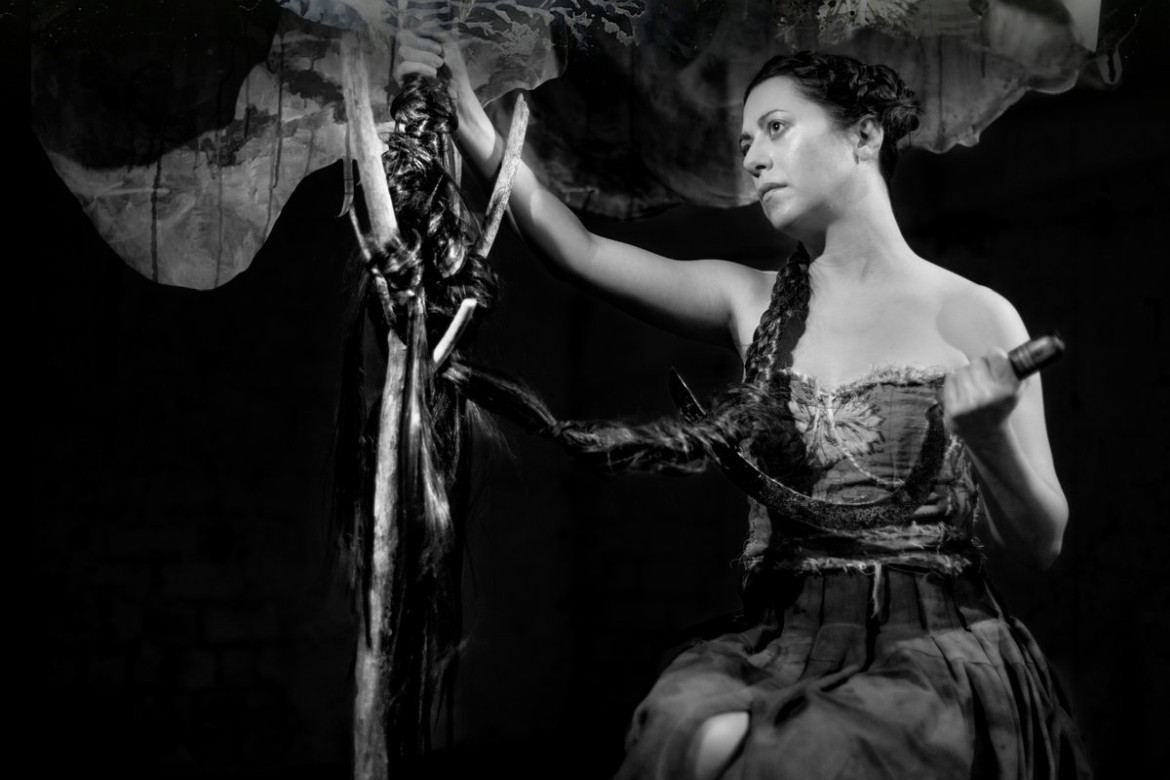“A crypt of flesh turned to stone.”
Much like Emma Ruth Rundle finds resonance in the heavy scene, Maud the moth has always had an alignment with Avant-Garde metal, despite never being involved with distorted guitar. 2020’s Orphnē is not texturally similar to any of Nucleus Torn, Dreadnought, Kaatayra or maudlin of the Well, but could easily be recommended to those who have an ear for such weird metal. The solo project of Amaya López-Carromero, Maud the moth takes piano-driven singer-songwriter music to unusual places. Songs are structured as needed to tell mythical tales, sung by López-Carromero in her uniquely expressive voice. Her records have incorporated different instruments over time, all conducted by her piano. Her live performances re-interpret the studio work through extensive looping, carefully retaining the tightness of the compositions.
López-Carromero’s time since 2020 has been spent well: supporting the likes of Kayo Dot, Hexvessel, Chelsea Wolfe, and Anna von Hausswolff, collaborating with the elusive Trajedesaliva and kicking off a successful side project in Healthyliving. Between these achievements she has found time to finish her next solo record, The Distaff, which immediately becomes the defining album of her Maud the moth project. By retaining all of the past instruments (especially the chamber orchestra space) and embracing ones, her music now reaches unseen heights of drama. Though not always present, distorted guitar is a key texture on the album, an ingredient that locks into place perfectly (contributed by Scott McLean of Ashenspire,also López-Carromero’s bandmate in Healthyliving). The Distaff is a masterclass in album structure, as every song has a different motivation, converging on the same ethereal, uneasy mood.
“A temple by the river” introduces us to this new sound. López-Carromero’s piano is ever-present, but every moment has new accompaniment that is used in unexpected ways. Guitars bring bassy swells and occasionally crushing chords, but often resemble a fuzzy strong section answering the call of the keys. The drums don’t need to drive the rhythm, as the piano retains its percussive quality even when the mix gets very busy. Instead, cymbals crash at pivotal moments and tom runs decorate the builds and fades. This loose orchestra is a treat on the ears, and there’s even weirder instruments that pop up including the Moog, psaltery, and hyperpiano. Many claim to successfully meld the sphere’s of classical and rock music – The Distaffis a successful execution of both that stays true to their sound and spirit.
Such dramatic moments are followed by necessary aftermaths. “Exuviae” carries the ambiguous mood into a fully piano driven piece. The string and drone noises become scarce, as if the band is too afraid to approach López-Carromero as she slowly builds to a passionate conclusion. It matches “A temple by the river”’s emotional intensity yet approaches it from a much more minimal angle. López-Carromero’s voice also carries moments such as this – she demonstrates deliberate precision in both pitch and volume, yet every delivery is unexpected. She trembles and drifts like a ghost on “Burial of the patriarchs” and throws her voice to the heavens on “Fiat lux”. You get the feeling she has the talent and practice to pull off every line in a flawless way, but she instead opts for more character with every breath.
The pattern of trauma and recovery repeats across The Distaff on the small and large scale. It’s fundamental to the way it creates and releases tension, from her shortest piano dirges to the album’s longest track. “Despeñaperros” is so huge the entire remainder of the album practically bows out, allowing it to be the record’s centrepiece. It’s also Maud the moth‘s finest nine minutes of music to date, engagingly structured as it shifts between tragedies with a full choir of López-Carromero‘s voices. It’s nothing like a typical progressive rock track, but if only they all moved like this.
Work on The Distaff can be traced all the way back to 2020 (you can find an intimate mix of “Siphonophores” on Bandcamp) making it a ‘pandemic’ record through and through. Through its lyrics in all of English, Spanish and Latin, The Distaff is a meditation not on modern but past tribulations, retracing Lopez-Carromero’s upbringing in Spain. Generational trauma is hidden within the picturesque and almost mythical lyrics (“My flowing body between the reeds that drone the chanters of men, and my body is not enough”). Themes of tragedy in the roles and treatment of women echo across the album.
My background in heavy music leads me to interpret Maud the moth’s music with a certain ear. As there are so many avenues you could approach The Distaff, I’d encourage you to seek out perspectives on the project that are rooted in modern and chamber classical scenes. No matter their background, everyone should agree that this is Maud the moth’s strongest record – songwriting, performance, arrangement and lyrics align to create something deeply moving and memorable. With the new embrace of distortion, it’s certainly one that is ready to resonate with the heavy scene that Lopez-Carromero finds herself orbiting. Here’s hoping these various stars align and the reception goes exponential.
9/10
The Distaff releases independently on the 21st February and can be pre-ordered here.

